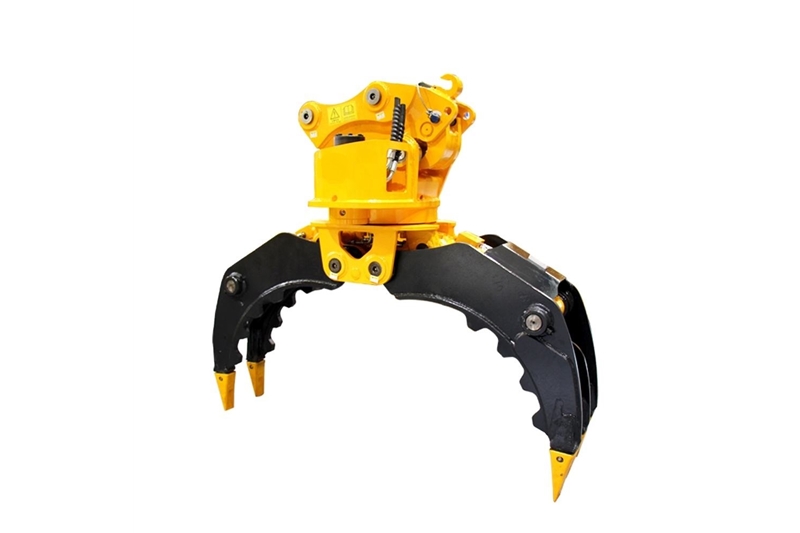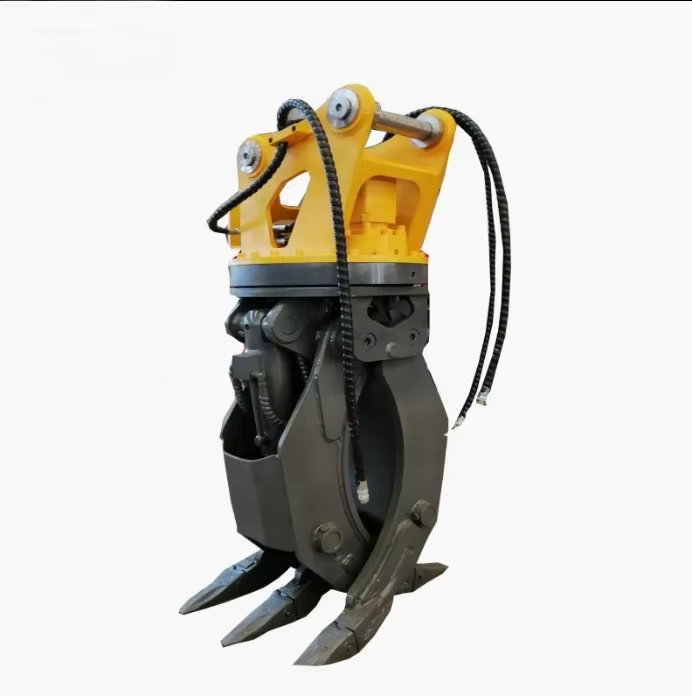-
Home
- About Us
- Products
- News
Inquiry
Contact UsIf you have any questions, please contact us immediately!
Hydraulic Grapple(1)
I. Outstanding Power and Efficient Operation Performance
1. Powerful Core: The equipment is equipped with a high-torque hydraulic motor, providing a continuous supply of power for the log grapple. Its torque output has been meticulously calibrated, achieving a 20%-30% increase compared to products of the same model. This enables it to easily handle various materials with high density and heavy weight, whether they are thick logs, hard stones, or piles of waste, all of which can be firmly gripped.
2. Efficient Operation Cycle: Through in-depth optimization of the hydraulic circuit, the log grapple switches between various actions extremely smoothly, completely eliminating jamming. Operational efficiency is increased by 15%, leading to a significant rise in workload and higher economic benefits for enterprises.
II. Sturdiness and Durability, Effectively Reducing Long-Term Operating Costs
1. Robust Structure Made of High-Quality Materials: Key structural components are all made of high-strength wear-resistant steel (such as NM400), which possesses excellent strength and toughness, capable of withstanding huge external impacts without deformation or damage. The grapple teeth are even cast from special alloy structural steel, greatly enhancing surface hardness and improving wear resistance by over 50%. Even when frequently grabbing hard materials for a long time, the wear rate of the grapple teeth is extremely slow, significantly extending the replacement cycle and reducing accessory costs.
2. Comprehensive Sealing Protection for Stable Hydraulic System: Fully sealed hydraulic cylinders effectively block the intrusion of external impurities, preventing dust, sand, and other particles from entering the cylinder interior. This avoids wear between the piston and cylinder wall, prolonging the service life of the hydraulic cylinders. The application of dust-proof and waterproof joints further enhances the sealing performance of the hydraulic system, reduces the risk of hydraulic oil leakage, and decreases the number of shutdowns for maintenance caused by hydraulic system failures.
- Previous:Hydraulic Grapple(2)
- Next:Australian -style hydraulic grab
- About Us










